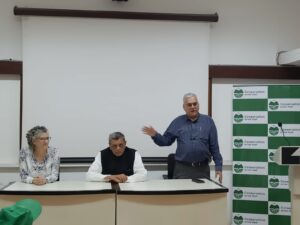Last month, a three-judge bench of the Supreme Court stayed the eviction action called against 11.8 lakh forest dwellers whose claims over forest land have been rejected.
On February 13, the apex court had ordered the eviction of over 10 lakh tribals and other traditional forest dwellers from forest lands across 21 Indian states. The move came after the central government failed to defend the forest rights of the claimants.
The recent SC order comes in the backdrop of the union government moving a petition, seeking a stay on the original order that called on states to file affidavits explaining why evictions—in cases where claims were rejected—have not been carried out yet and also to ensure that eviction is made in cases where eviction orders have attained finality.
The SC’s previous order was passed on February 13 in view of The Scheduled Tribes and Other Traditional Forest Dwellers (Recognition of Forest Rights) Act, 2006. The act is also known as the Forest Rights Act (FRA).
The proceedings of the court during the passage of the ‘stay order’ merits thorough consideration so as to ascertain the subtleties of the issue and also to get a glimpse of the direction in which the SC is headed with regards to the FRA.
The FRA was enacted in 2006 to legally grant forest rights to Schedule Tribes (STs) and Other Traditional Forest Dwellers (OTFDs), including the responsibility for “sustainable use” of forest resources so as to strengthen forest conservation programs while also ensuring the livelihood and food security of forest dwelling communities. The Forest Rights Act also entitles communities and protects claims over their generational land. It also entitles tribal land claims and seeks to grant—for the first time—negotiating power to the tribal communities.
On February 28, The Hindu reported that while the Bench acknowledged there’s a need to “delve into whether due process was followed by gram sabhas and state authorities” before the final rejection of claims, it also stated that “the mighty and the undeserving” who have encroached forestlands would have to face appropriate measures that legal processes entail, i.e. eviction in cases where claims are rejected.
This is noteworthy because it highlights two important points: there is a possibility that there may be loopholes in the processes that are currently in place to reject a claim, and also that the degradation of forestland is an imminent ecological threat.
A member of the SC bench also specifically reiterated that encroachment of forestlands is “a serious problem”.
“Release of public forests and wooded revenue lands for agricultural use has been the single biggest reason for deforestation for over a century in India and other parts of the world,” said Ullas Karanth, director, Centre for Wildlife Studies. “We cannot wish away this reality,” he added.
The other point that ought to be highlighted is that not every claim that is filed is bound to be accepted and the next logical step, after the rejection of a claim, is eviction. Speaking about the same, Praveen Bharghav, lead petitioner in the case and trustee of Wildlife First, said that it must be clarified that the court had only ordered action against those claimants whose claims were found to be ineligible.
“Not all claims are genuine or should be accepted automatically,” Karanth said. “With land prices in Western Ghats shooting up to over Rs 5 lakh to 10 lakh per acre, and with valuable timber worth millions involved, the temptation to file false claims is huge,” he added.
Explaining the element of sustainability with regards to the FRA, Karanth said that considering demographic realities like the millions of landless people in India, providing forested lands to all such persons is “unrealistic and ecologically unsound”.
The FRA law was drafted from the point of view of both forest conservation and the preservation of livelihood. So isn’t the FRA different from the slew of schemes floated by the Ministry of Tribal Affairs (MoTA), aimed solely at the socio-economic development of tribal populations?
In any case, in line with such a law, about 41 lakh claims have been filed as per the latest data published by MoTA and about 42 lakh hectares of forestland have already been distributed following the acceptance of claims. And going by the SC order, about 40 per cent of the claims that were fielded have been rejected.
Noting the rejections, Bharghav said, “FRA was enacted to recognise pre-existing rights over forest land and minor forest produce and not meant to be a land grant or land distribution act.”
“The Act has been in place since 2006 but claims are being filed even today… after more than a decade. Why?” asked G V Reddy, chief wildlife warden, Rajasthan. Reddy pointed at the lack of a sunset clause to the FRA—a clause that would put in a definite timeline within with claims ought to have been made so as to reduce the probability of the filing of bogus claims.
“Political awareness about such issues cannot be lacking even after 13 years,” he added.
“Initially, a window of 90 days was provided to file claims,” said Debi Goenka, head of Conservation Action Trust (CAT). “But this was extended and the window is open even today,” he added.
Reddy also drew parallels to other land encroachments. “The country has lost many grasslands because illegal encroachments are regularised by the government. In some cases, such lands are then bought by the government to build or widen roads… it’s bad that the system allows such things.”
Bharghav, too, spoke of the vicious cycle of encroachment and regularisation. “There have been several waves of forest encroachments and regularization and every regularization has become the launch pad or impetus for fresh encroachment,” he said.
“Now, if every rejected claimant gets land and no action is initiated, it will trigger an all-consuming, massive round of encroachment which will simply overrun our entire forests. And those opposing this SC Order will then be answerable to future generations.”
Apart from the recognition of forest rights, there is another aspect of the FRA that merits serious consideration—the establishment of ‘critical wildlife habitats’ (CWHs). The CWH refers to an area of a national park or sanctuary that is required to be kept as “inviolate for the purposes of wildlife conservation”.
As of today, no forest area has been notified as a CWH.
Goenka, further explained this point. “Ideally, critical wildlife habitats should have first been notified and then titles over land should have been distributed—not the other way round,” he said.
And explaining the larger ecological issues that our country faces today, Goenka said, “Every part of the country experiences droughts. Amid challenges like climate change, the water problem will only get worse in the next few years. We get water only because of forests, and if this is depleted, both urban and tribal populations will be affected.”
As regards the rights of forest dwelling communities, the FRA issue also points at questions on the nation’s capability to deal with its landless population and poverty, and whether such issues can be addressed by distributing what is left of India’s forested landscape—a meagre 5 per cent.


